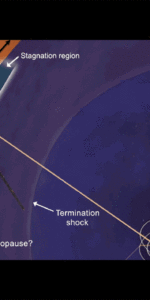
It seems Curiosity is doing great things both on Mars and on Earth. Just four months into a two-year primary mission, President Obama is seeking to capitalize on the Mars Science Laboratory’s (MSL) momentum and commit the nation to a decade of Martian exploration. A series of smaller missions will culminate in a new rover to be sent to the Red Planet in 2020, affirming the agency’s commitment to exploration to meet the nation’s scientific and human objectives in space.
“The Obama administration is committed to a robust Mars exploration program,” said NASA Administrator Charles Bolden. “With this next mission, we’re ensuring America remains the world leader in the exploration of the Red Planet, while taking another significant step toward sending humans there in the 2030s.”

The plan will see NASA launch numerous new missions while also supporting the rovers Curiosity and Opportunity‘s in-situ exploration. In 2013, we’ll see NASA launch the Mars Atmosphere and Volatile EvolutioN (MAVEN) orbiter, which will study the Martian upper atmosphere. The Interior Exploration, using Seismic Investigations, Geodesy, and Heat Transport—the InSight mission—will follow and take the first look into Mars’ deep interior to shed light on the planet’s development. NASA will also participate in the European Space Agency’s (ESA) 2016 and 2018 ExoMars missions, a role that will include providing “Electra” telecommunication radios to ESA’s 2016 mission and a critical element of the premier astrobiology instrument on the 2018 ExoMars rover. The climax of this exciting decade is the plan for a new robotic science rover to launch in 2020. Things are slated to get better from there as this next rover will constitute another step toward sending humans to orbit Mars sometime in the 2030s.
With this one announcement, NASA has effectively increased the number of missions it’s operating and working on for Mars to seven.
And it all comes back to Curiosity. As scientists develop the next rover, they will draw heavily on the lessons learned on the MSL mission. And, as it’s done in the past, reusing old technology will help NASA keep mission costs down without sacrificing science goals. NASA says this mission does fit within the five-year budget plan in the president’s Fiscal Year 2013 budget request, though it’s still contingent on future appropriations.
There aren’t any details on the 2020 mission yet. Payload and science instruments will be openly competed for following the Science Mission Directorate’s established processes for instrument selection; before anything happens a science definition team will outline the specific objectives for the mission. But whatever the mission’s primary goal turns out to be, it will keep NASA on track with the goals laid out in the National Research Council’s 2011 Planetary Science Decadal Survey, while also responding to the Mars Program Planning Group’s reconstruction of the Mars Exploration Program.

“The challenge to restructure the Mars Exploration Program has turned from the seven minutes of terror for the Curiosity landing to the start of seven years of innovation,” said NASA’s associate administrator for science, and former astronaut, John Grunsfeld. “This mission concept fits within the current and projected Mars exploration budget, builds on the exciting discoveries of Curiosity, and takes advantage of a favorable launch opportunity.”
Throughout these missions NASA will develop new capabilities through its Space Technology Program, Human Exploration and Operations Mission Directorate, and from contributions from international partners. Gaining new skills while undertaking a dedicated study of our nearest planetary neighbor could be a rewarding prospect.





My hope is that the Obama Administration will commit to a Mars sample return mission.
Nothing we do in Mars would be so captivating yet is also so within our grasp technically. A sample return mission could also, depending on its architecture, serve as a dress rehearsal for crewed missions to the Red Planet.
Amen to a sample return mission! It should be priority one!
I’m all 1000% behind continued Mars Exploration. But what about Titan, Europa and Enceladus??